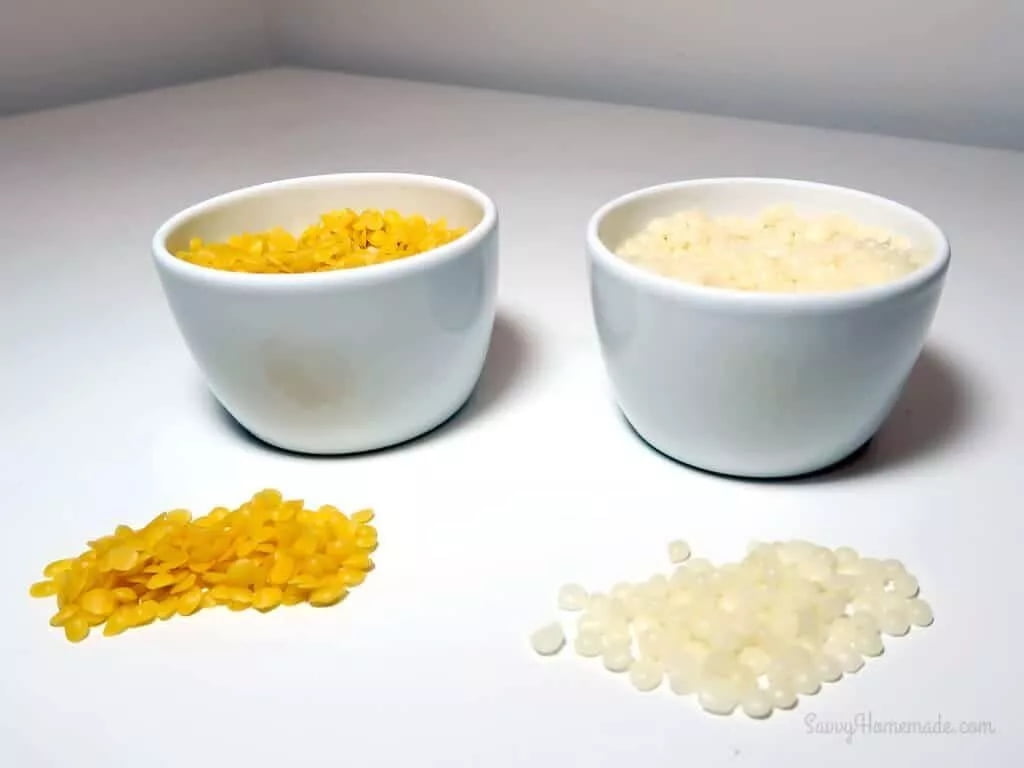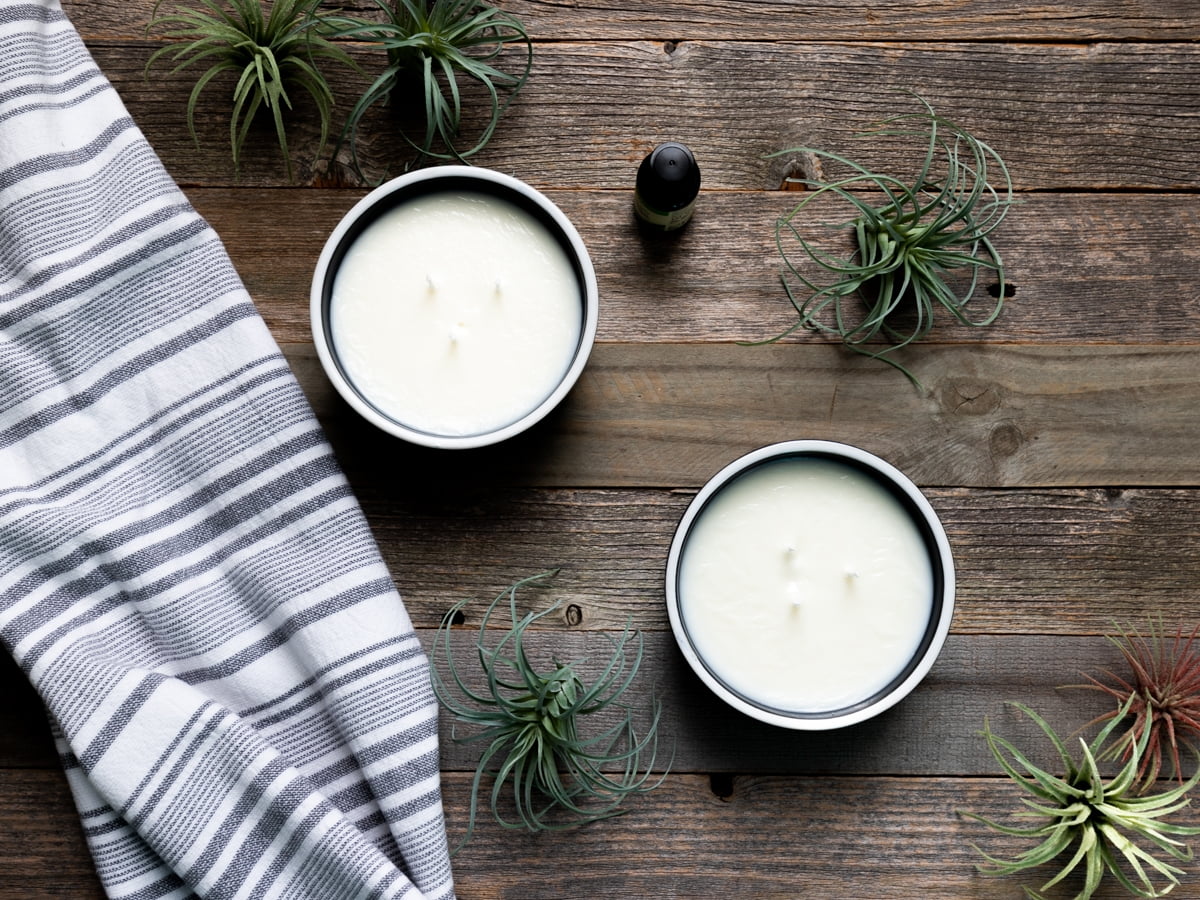When it comes to candle making, one of the most crucial aspects that often goes overlooked is the proper alignment and straightness of the wick. In fact, ensuring that the wick remains straight throughout the entire process is essential for achieving a quality candle that burns evenly and efficiently. But how exactly do you keep a wick straight when making candles?
In this article, we will delve into the various techniques and tools necessary to maintain a straight wick during the candle making process. From understanding the different types of wicks available to knowing how to achieve proper tension, we will explore everything you need to know in order to master the art of keeping wicks straight.
Before diving into the specifics, it’s important to recognize why keeping a wick straight holds such importance. When a wick is not properly aligned, it can cause an uneven burn or even extinguish itself prematurely. This can not only reduce the longevity of your candle but also impact its overall aesthetic appeal. By maintaining a straight and properly placed wick, you can ensure that your candles burn smoothly and evenly, providing hours of enjoyment.
Whether you are a seasoned candle maker or just starting out on this fragrant journey, understanding how to keep a wick straight is fundamental knowledge that should not be overlooked. So let’s get started on our quest for perfect candles by exploring various techniques, tools, and expert insights that guarantee precise wick placement every time.
Understanding the Different Types of Wicks
When it comes to making candles, one of the key factors in achieving a successful burn is selecting the right wick. The type of wick you choose depends on several factors, including the type of wax you’re using, the diameter and height of your candle container or mold, and any desired special effects such as fragrance release or self-trimming capabilities.
Understanding the different types of wicks available will help you make an informed decision and ensure that your wick stays straight throughout the burning process.
There are three main types of wicks: flat braided, square braided, and cored wicks. Flat braided wicks are made by weaving multiple strands of fibers together into a flat braid. They are generally best suited for containers with diameters up to 4 inches. Square braided wicks have a similar construction to flat braided ones but offer better flame stability and reduce carbon buildup due to their shape. They are commonly used in larger container candles or molds.
Cored wicks consist of a cotton or paper core surrounded by a woven textile sleeve. These wicks are mainly used in pillar candles or scented candles that require a higher melt pool temperature. The core provides strength and rigidity to support the weight of the candle as it burns down.
To determine which type of wick is right for you, consider factors such as candle diameter, desired burn time, and specific requirements for fragrance release or special effects (such as crackling sounds). It’s also important to test different wicks before committing to a particular choice. Making small test batches with different wick sizes and measuring their burn characteristics can help you find the perfect match for your candles.
| Wick Type | Suitable Candle Types | Key Features |
|---|---|---|
| Flat Braided | Containers up to 4 inches in diameter | Flexible, easy to use, good for shorter burn times |
| Square Braided | Larger container candles or molds | Better flame stability, reduces carbon buildup |
| Cored | Pillar candles or scented candles requiring higher melt pool temperature | Provides strength and rigidity for weight support |
Remember that different waxes and container materials can also affect the burn performance of your selected wick. It’s essential to consider all these factors together when choosing a wick type. Additionally, it is recommended to consult with experienced candle makers or suppliers who can provide guidance based on their expertise and experience.
By understanding the different types of wicks available and their suitability for various candle types, you can ensure that your wick stays straight during the burning process, leading to optimal burn performance and a high-quality finished candle.
Essential Tools and Materials for Wick Placement
In order to achieve straight and centered wicks in candle making, it is important to have the right tools and materials at your disposal. This section will provide a comprehensive guide on the essential tools and materials needed for proper wick placement.
- Wick Tabs: Wick tabs are metal discs with a hole in the center that hold the wick in place at the bottom of the container or mold. They come in various sizes to accommodate different wick thicknesses. When selecting a wick tab, ensure it matches the diameter of your chosen wick.
- Wick Holders: These are small metal or plastic devices designed to center the wick during pouring and curing. They come in different shapes, such as clips or pins, and they can be adjusted to fit various container sizes. Wick holders not only help keep the wick straight but also prevent it from moving or falling into the wax.
- Wick Stickers: Also known as adhesive dots or squares, these double-sided stickers are used to secure the base of the wick to the bottom of the container or mold before pouring wax. Wick stickers provide stability and prevent any movement during pouring and cooling.
- Ruler or Measuring Tape: Accurate measurement is crucial when determining the appropriate length of a wick for your candle size. A ruler or measuring tape will help you determine how long your wick should be, taking into account factors such as container height and width.
- Pencil or Pen: Use a pencil or pen to mark the center point on both ends of your container or mold. This will serve as a reference when placing the wick, ensuring it stays straight and centered throughout the candle-making process.
- Heat-Resistant Glue Gun (Optional): In some cases, using a heat-resistant glue gun can be helpful for securing larger wicks onto their tabs or stickers before pouring wax. It provides additional reinforcement to prevent any movement or slippage during the pouring process.
By having these essential tools and materials on hand, you will be well-equipped to achieve proper wick placement in your candle making. It is important to invest in quality tools that are designed specifically for this purpose, as they will contribute to the overall success and appearance of your candles.
Preparing Your Container or Mould
Proper preparation of your container or mould is crucial in ensuring ideal wick placement for your candles. This step directly affects the stability and alignment of the wick, which ultimately contributes to a successful candle-making process. Follow these guidelines to ensure that your container or mould is ready for optimal wick placement.
Firstly, it is important to clean your container or mould thoroughly before beginning the candle-making process. Any dirt, dust, or debris left inside can negatively impact the wick’s stability. Use a mild soap and water solution to wash the container and allow it to dry completely before proceeding. Ensure that there are no remnants of cleaning products left behind as they can affect the performance of the wax and overall burn quality.
Once your container or mould is clean and dry, you may need to consider priming it for better adhesion of the wick tab. If you are using a glass or ceramic container, lightly roughen the bottom surface where the wick will be placed using sandpaper. This creates a textured surface that improves the adherence of the wick tab.
For metal containers, it is recommended to use a heat-resistant adhesive such as hot glue or double-sided tape to secure the metal sustainer on which the wick tab is attached. Apply a small amount of adhesive on one side of the metal sustainer and press it firmly onto the bottom center of your container. Allow it to dry completely before proceeding with placing the wick.
| Tools/Materials | Description |
|---|---|
| Mild soap | A gentle cleaning agent to remove dirt and debris from containers/moulds. |
| Water | Used in combination with mild soap for cleaning purposes. |
| Sandpaper | Used to create a textured surface on glass or ceramic containers for better wick tab adhesion. |
| Heat-resistant adhesive | A strong adhesive, like hot glue or double-sided tape, for securing the metal sustainer on metal containers. |
Taking the time to properly prepare your container or mould before placing the wick ensures that it will remain in the desired position throughout the candle-making process. This step sets the foundation for successful wick placement and overall candle quality. By following these guidelines and using the recommended tools and materials, you can ensure ideal wick placement that leads to beautiful and functional candles.
Wick Stickies and Centering Devices
Wick stickies and centering devices are essential tools in achieving effortless wick alignment. These simple yet effective items can make the candle-making process much easier and ensure that your wick stays straight throughout the entire burn.
What are Wick Stickies?
Wick stickies, also known as adhesive wick stickers or tabs, are small pieces of double-sided adhesive that adhere to the base of the wick. They are typically made from a heat-resistant material to withstand the high temperatures of candle burning.
Using wick stickies is a popular method for securing wicks in containers or molds because they provide a strong bond between the wick and the bottom of the container. To use them, simply peel off one side of the adhesive and stick it to the base of your wick. Then, remove the other side of the adhesive and press it firmly onto the bottom center of your container or mold.
The Benefits of Using Centering Devices
Centering devices are another helpful tool when it comes to aligning wicks in candles. These devices come in various shapes and designs but all serve to keep your wicks centered and straight during pouring and setting.
One common type of centering device is a metal or plastic disc with holes or notches where you can insert your wicks. These discs sit on top of your container or mold, allowing you to pour your wax while keeping the wicks perfectly centered.
Another type of centering device is a metal clip that clips onto the top edge of your container or mold. It features multiple holes where you can insert different-sized wicks, ensuring they stay straight and properly spaced apart during pouring.
Tips for Using Wick Stickies and Centering Devices
To achieve optimal results when using wick stickies and centering devices, consider these tips:
- Make sure your container or mold is clean and free from any wax residue before applying the wick stickies or centering device. This will ensure a strong bond and prevent them from coming loose during burning.
- Position your wick stickies or centering device in the exact center of your container or mold for maximum alignment.
- Use a ruler or measuring device to ensure that your wicks are evenly spaced apart if you’re using a centering device with multiple holes.
By utilizing wick stickies and centering devices, you can simplify the process of aligning your wicks and achieve professional-looking candles with ease. These tools provide the stability and precision needed to keep your wicks straight, allowing for an optimal burning experience.
The Trick to Achieving Proper Wick Tension
Proper wick tension is crucial for achieving a successful and even burn in your candles. When the tension is too loose, the flame may flicker or drown in melted wax, resulting in an inefficient burn.
On the other hand, if the wick tension is too tight, the wax may not be able to flow up the wick properly, leading to tunneling and wasted wax. In this section, we will explore some tips and techniques to help you achieve the ideal wick tension for your candles.
- Testing Wick Tension: Before pouring your entire candle, it is important to test the wick tension first. To do this, attach a small piece of wick to a metal tab and place it in an empty container or mold. Pour a small amount of melted wax into the container and observe how the flame burns.
If it flickers excessively or creates large amounts of soot, then the wick tension is too loose. Conversely, if hot spots form on one side of the container or if there is excessive mushrooming at the top of the wick, then the wick tension is too tight. - Adjusting Wick Tension: Once you have determined that your wicks need adjustment, there are several techniques you can use to achieve proper tension. One method involves gently pushing down on the top of the wick with a metal object like a spoon or a skewer while the candle is still warm and pliable. This helps create more contact between the molten wax and the wick and can loosen its tension.
- Using Wick Trimmers: Another way to achieve optimal wick tension is by using a pair of specialized tools called wick trimmers. These trimmers have different angles on each blade, allowing you to trim one side shorter than the other. By trimming one side slightly shorter than the other before lighting your candle for future burns, you can create a slight tilt that encourages the flame to burn more evenly.
By understanding the importance of wick tension and utilizing these tips and techniques, you can ensure a beautiful and efficient burn in your homemade candles. Remember to always test and adjust wicks before pouring your entire candle, as this will save you time and materials from potential mistakes. Mastering the art of achieving proper wick tension is an essential skill for candle makers, so don’t be afraid to experiment and find what works best for your specific candles.
Common Mistakes in Wick Placement and How to Avoid Them
Lack of Proper Measurement
One common mistake that can result in crooked wicks is not measuring the length of the wick properly. It’s important to measure the height of your container or mould accurately before trimming the wick.
If you underestimate the height, your wick may end up being too short and won’t reach the bottom of your candle, causing it to burn out prematurely. On the other hand, if you overestimate the height, your wick may be too long and will produce a larger flame that could create excessive soot.
To avoid this mistake, always measure twice before cutting once. Use a ruler or tape measure to determine the exact height of your container or mould. It’s also helpful to add an additional inch or two to account for any adjustments needed during the candle making process.
Improper Wax Adhesion
Another common mistake that can lead to crooked wicks is improper wax adhesion during the pouring process. If the wax does not adhere securely to the base of the container or mould, it can cause the wick to shift and become misaligned as it dries.
To ensure proper wax adhesion, it’s important to thoroughly clean and dry your containers or moulds before pouring in the wax. Any residue or moisture left inside can prevent a strong bond from forming between the wax and surface. You can also use adhesive materials such as hot glue dots or double-sided sticky tabs specifically designed for candle making to provide additional support and keep your wick in place.
Neglecting Wick Centering Devices
Many beginners make the mistake of neglecting to use wick centering devices when pouring their candles. These devices are specifically designed to hold the wick straight and centered while you pour in your melted wax. Without them, it can be difficult to achieve proper alignment as you try to balance everything in place.
It is highly recommended to invest in wick centering devices such as wick pins or metal wick holders. These tools are easy to use and ensure that your wick stays straight throughout the entire pouring process. They eliminate the guesswork involved in keeping the wick centered and allow you to focus on other aspects of candle making without worrying about misaligned wicks.
By avoiding these common mistakes in wick placement, you can ensure that your candles burn evenly and beautifully every time. Taking the time to measure accurately, ensure proper wax adhesion, and utilize wick centering devices will go a long way in achieving straight and well-positioned wicks for your handmade candles.
Troubleshooting
Even with proper preparation and the right tools, there may be times when your wick just won’t stay straight. This can be frustrating, but there are several troubleshooting techniques you can try to address this issue.
One common problem is that the wax itself is causing the wick to move or shift. If you notice that your wick won’t stay straight after pouring the melted wax into your container or mold, it is possible that the wax is too hot. When wax is poured at an extremely high temperature, it can cause the wick to bend or slant. To prevent this issue, make sure the wax has cooled enough before pouring it.
Another reason for a crooked wick could be improper adhesion of the wick to the bottom of the container or mold. If the adhesive used doesn’t have enough strength, it may not hold the wick in place as well as it should. To remedy this, consider using a stronger adhesive specifically designed for candle making. Additionally, ensure that you are applying enough pressure to secure the wick in its desired position.
In some cases, if your wick won’t stay straight even after trying different techniques and solutions, you may need to reposition it during or after pouring. This can be done by carefully using a skewer or pencil to gently push the wick back into place while being mindful not to disturb other components of your candle. It’s important to do this while the wax is still soft and pliable but avoid doing so once it has hardened.
By troubleshooting these potential issues and experimenting with different methods, you can find a solution that works best for keeping your wicks straight during candle making. Remember that practice makes perfect, and with time and experience, you’ll become more adept at achieving optimal wick placement for beautifully crafted candles.
Expert Insights
Achieving perfect wick placement is essential for making high-quality candles. To help you master this crucial aspect of candle making, we have gathered some expert insights and pro tips:
- Measure Twice, Cut Once: Before cutting your wick, make sure to measure it properly. The length of the wick should be determined by the size of your container or mould. It’s better to have a longer wick than a shorter one, as you can always trim it later if needed.
- Secure the Base: To ensure that the wick stays in place while pouring the wax, it is important to secure the base of the wick. One effective method is to use a small amount of hot glue or double-sided adhesive at the bottom of the container or mould. This will anchor the wick and prevent it from shifting during pouring.
- Use a Wick Centering Device: A wick centering device can be a handy tool for keeping your wick straight and centered in your container or mould. These devices are typically made of metal or plastic and come in various sizes to accommodate different candle sizes. Simply insert the wick through the centering device and adjust its position until it is perfectly aligned.
- Keep an Eye on Tension: Proper tension plays a significant role in maintaining a straight wick throughout the burning process. If the tension is too loose, the flame may flicker or burn unevenly. On the other hand, excessive tension can cause tunneling or poor wax consumption. Finding the right balance may require some experimentation, so be prepared to make adjustments as needed.
- Consider Wick Holders: For containers with wider openings or irregular shapes, using a wick holder can be beneficial. These holders act as guides for positioning and securing the wick in place during pouring and solidification of wax.
By following these expert insights and implementing these pro tips, you can greatly improve the success rate of achieving a straight and well-placed wick in your candles. Remember, practice makes perfect, so don’t get discouraged if it takes a few tries before you achieve the desired results. With time and experience, you will become skilled at keeping your wicks perfectly straight in candle making.
Conclusion
In conclusion, mastering the art of keeping wicks straight in candle making is crucial for achieving beautiful and evenly burning candles. Throughout this article, we have discussed the importance of proper wick placement and tension, as well as the tools and techniques that can aid in achieving ideal alignment. By understanding the different types of wicks and utilizing centering devices like wick stickies, candle makers can ensure that their wicks remain straight throughout the entire process.
One key takeaway from this article is the significance of preparing your container or mold before placing the wick. Ensuring a secure base for your wick will help prevent it from shifting or leaning during pouring and curing.
Additionally, it is important to be vigilant for common mistakes in wick placement, such as allowing the wick to sink too low or using a wick that is too small for your candle size. By avoiding these mistakes and following expert insights, candle makers can achieve professional-looking results.
However, even with careful preparation and execution, there may be instances where the wick won’t stay straight. This troubleshooting section provides solutions for addressing these issues, such as using a toothpick or skewer to reposition a leaning wick or adding extra support with a second wick. With practice and patience, candle makers can overcome these challenges and continue perfecting their craft.

Welcome to my candle making blog! In this blog, I will be sharing my tips and tricks for making candles. I will also be sharing some of my favorite recipes.





